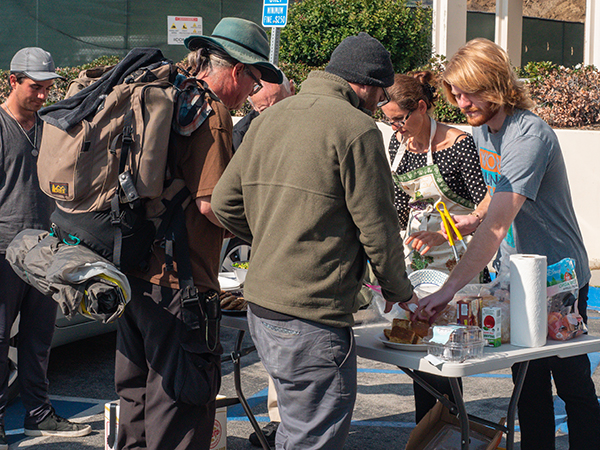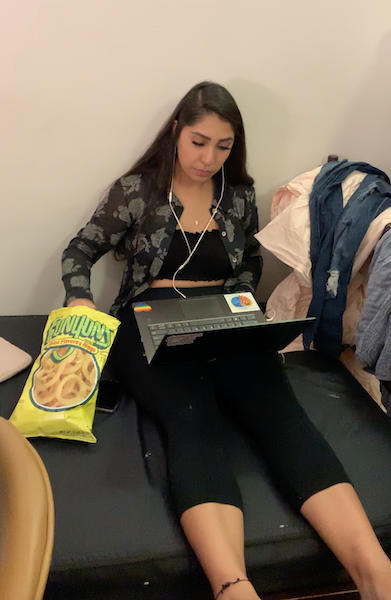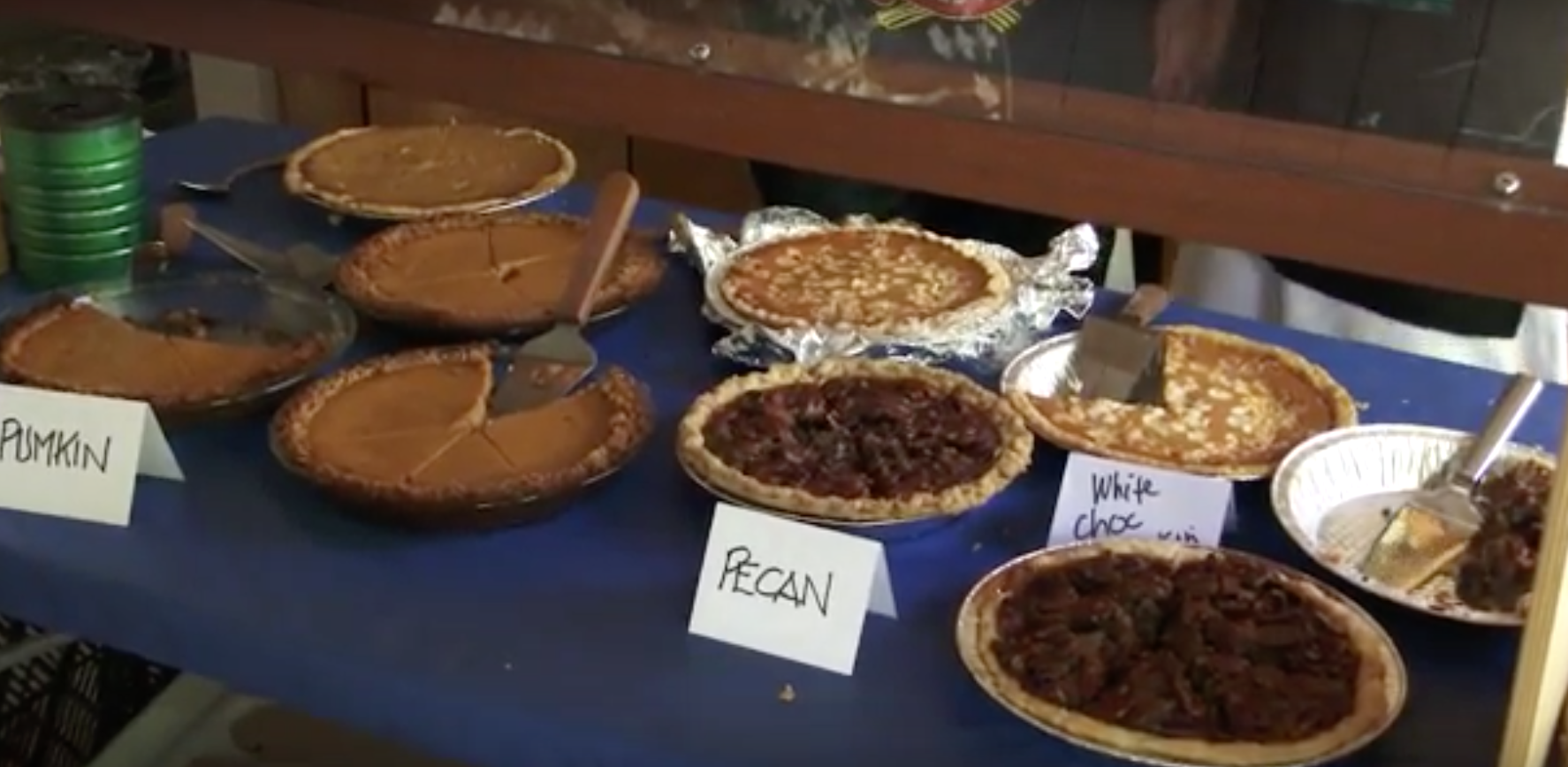
Carl sat at a brown table inside the Webster Elementary School Auditorium, legs on either side of the attached bench, with a hot plate of lasagna steaming in front of him.
Every once in a while he’d look up, lift the Ray-Bans he found on a Metro bus from his eyes and stand from his seat to engulf old friends in an embrace. The Standing on Stone (S.O.S.) Homeless Outreach meeting at the school that October night gave him a place to reunite with those he knew.
With his enthusiastic laughter and a seemingly permanent smile, one could almost forget he was homeless.
The 27-mile stretch of Pacific Coast Highway that runs through Malibu offers a contrasting view of the two extremes of American society: the very rich and the very poor. Oftentimes, and especially among the Pepperdine community, the stories of the downtrodden are forgotten.
“I think the issue of homelessness is typically ignored by the larger Pepperdine and Malibu community,” said Ally Doyle, Pepperdine senior and president of the International Justice Mission (IJM) chapter on campus. “It seems that the residents of Malibu either tend to forget or choose to ignore the problem of homelessness in the greater LA area.
“The larger problem of homelessness, not just in Malibu and at Pepperdine, is the fact that the ‘housed’ tend to treat the homeless as less than human,” she continued. “A basic human right is to be treated as a person.”
A recent poll of 69 Pepperdine students showed 36 percent think homelessness is rare in Malibu, and 6 percent said they think it is nonexistent.
In Los Angeles County in 2011, 51,340 people were counted as homeless, according to a Los Angeles Homeless Services Authority report. In West Los Angeles — where Malibu is located — 10 percent of the homeless population was chronically homeless, the same as in the more economically disadvantaged East Los Angeles, a region of about the same size.
Someone who is “chronically homeless” is defined as “an unaccompanied disabled person who has been continuously homeless for more than one year or has had at least four episodes of homelessness in three years,” according to the report.
The report also showed 7 percent of those who are homeless in West LA are under-18 unaccompanied youth, while in the East LA and South Bay counties together only 4 percent of those who are homeless are under 18.
Vincent Salazar, a worker at Malibu House of Hope, wrote in an email that because the homeless tend to go from place to place, many are just passing through Malibu, staying here for a couple days then moving on. Also, because they look like travelers or backpackers, the community may not readily recognize them as homeless.
Malibu House of Hope assists at-risk and homeless youth and helps them support themselves, according to the website.
The topic’s human impact is best depicted in the stories of the less fortunate themselves.
“I’ve seen the Pacific, the Atlantic and the Gulf Coast,” Carl, 54, said.
Carl has been to 39 states since he left Indianapolis on a Greyhound bus. His family in Indiana ran an iron manufacturing business that helped construct high-rise buildings and was very well-off financially. He said he refuses to depend on them, though.
“I came out here to look for a way to make it on my own,” he said. “When I was 27 they found a tumor in me; it grew in my chest, said it was spreading in my lungs. I had treatment done, chemo and everything, and I got so skinny. I went from 205 pounds to 143.”
Carl said he had been diagnosed with lymphoma. Around the same time, his wife Debbie passed away, a subject he said he preferred not to get into.
In the years that followed, Carl said he experienced a downward spiral, alcohol a factor in some of his poorer decisions. He soon found himself without a home, separated from his family by both distance and hostilities.
While his cancer is now cured, he said he still has chronic pain in his back, chest and legs. He said he’s grateful to be well, but he doesn’t forget the times hospitals turned him away.
“I went down to the Brotman (Medical Center in Culver City) just a while ago and they told me to step out, kicked me out because I had no insurance; said because I was homeless there’d be no way I’d recover. How could they do that to me?”
A younger-looking man with long, dark hair, a tattoo of a cross on his right arm and a black sleeveless shirt on sat beside Carl to eat. His name was Moser, and the two said they often traveled together.
“I met him when he was 19,” Carl later said about his friend, now 21. “He’s got so much talent, there’s no reason for him to be on the streets. He knows his Bible really well, and he may not always act right, but he knows it.”
Moser is one of the many homeless individuals Carl has met in his time around Southern California. Some have suffered addiction, some rape, and he’s tried to get them to go to places like S.O.S. Ministries.
He talked about one woman, Mary, who he met about six months back across the street from a Sepulveda Blvd. bus stop in Santa Monica.
“At first I thought she was a man because her hair was so short, but then I heard her voice — it was so soft, it broke my heart.”
Mary went to college and worked as a nurse in the 1980s before she ended up spending the nights on PCH. Carl had a picture of her bundled up in sweaters and jackets, her feet swollen in sandals so much she couldn’t take them off.
At Pepperdine those dedicated to fighting homelessness range from weekly visitors to S.O.S. to student members of IJM.
“It really is beautiful that we go to a school that inspires students to reach out and sacrifice their money and time for those in need,” IJM member and senior Kacie Scherler said. “However, homelessness awareness is something that many students continue to ignore.
“Campus events such as Week of Hunger & Homeless seek to target awareness of these issues; however, the event often receives some major backlash and criticism,” she continued. “We have to find the balance between throwing our money at nonprofits halfway across the world and reaching out to our neighbor right in our own backyard.”
A survey of 69 Pepperdine students showed that 58 percent knew someone who is or has been homeless at some point in their lives, and 27 percent said the issue of homelessness is very prevalent in their home communities.
The issue, thus, may prove to be more connected to the university than it might first appear.
“You know, God says feed the hungry,” Carl said as he ate the rest of his meal.
Debbie Sanchez completed this story in Dr. Christina Littlefield’s fall 2012 Jour 241 class.



